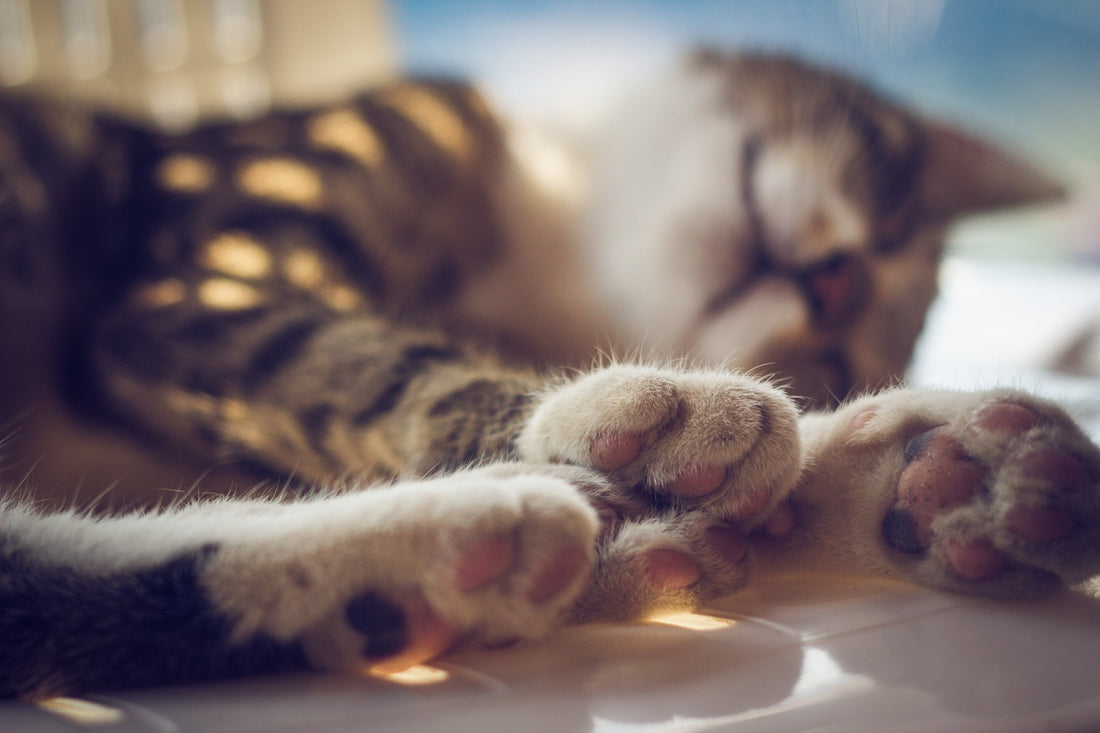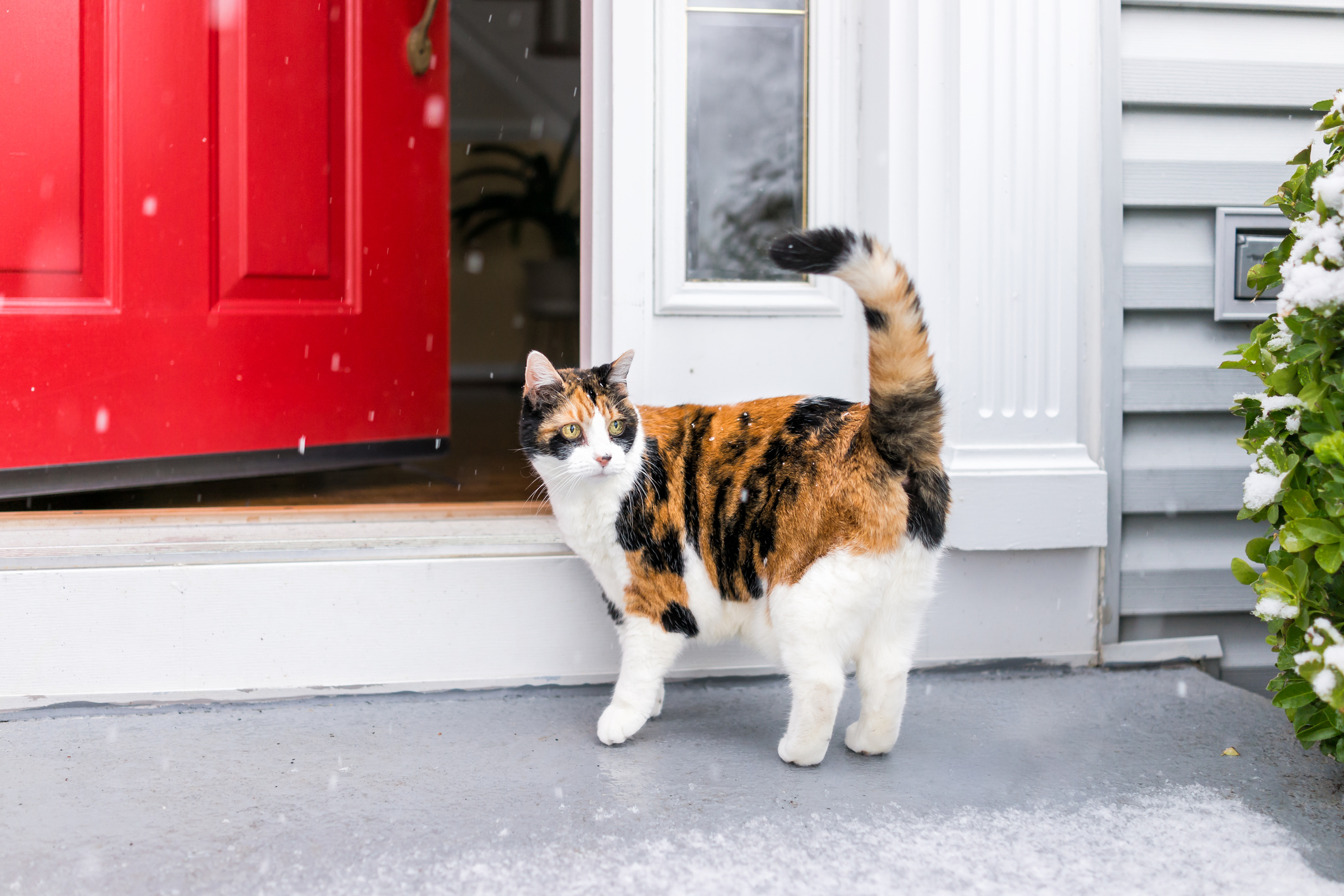
Brrr: It's Cold! Understand Your Cat's Natural Body Temperature
When adjusting your home’s temperature to keep yourself and your family comfortable, you probably don’t think twice about your cat. After all, if you’re comfortable, it’s likely that your cat is too, right?
However, what a lot of people don’t realize is that a cat’s normal body temperature is not the same as a human’s. It’s actually quite a few degrees higher, which means that, even when you feel comfortable in your home, your cat might not.
Understanding how your cat regulates its body temperature can help you make it as comfortable as possible year-round.
What is a cat’s normal body temperature?
While a human’s core body temperature hovers around 98.6 degrees Fahrenheit (37 degrees Celsius), the ideal feline body temperature is around 101.5 degrees F (38.6 degrees C). Normal temperatures for cats can actually range from 99.5 to 102.5 degrees F (37.5 to 39.1 degrees C).
Because their core temperature is higher, cats can generally tolerate slightly higher external temperatures than we can, meaning they’ll be more comfortable in the summer heat. However, they may be much colder during winter, especially if you set your heat lower to save some money.
Fortunately, cats are remarkably good at regulating their own body temperatures by utilizing intelligence and bodily processes. They also get in the habit of squeezing into the most comfortable areas of the home year-round; curling up in small spaces like boxes, under beds or even in sinks helps keep their body temperature steady while the external temperature fluctuates.
Keeping your cat comfortable throughout the year
Although cats are pretty self-sufficient when it comes to body temperature regulation, there are a few things you can do in the extreme-temperature seasons to make this process easier for your cat.
During winter
If you live in a place that gets really cold in the winter months, make sure you’re providing spaces for your cat to warm up throughout the home. This might mean purchasing additional blankets and cat beds or even pet-safe electric heating pads for it to lay on.
Additionally, allow your cat access to small, warm spaces, like closets, under beds or in boxes where it can curl up and get cozy. Make sure you’re aware of where your cat is so it doesn’t get stuck.
You can also open the shades of your home to create sunny spaces for your cat to lie in and soak up the warm rays. Finally, avoid shaving your cat during winter so it has a full coat of fur to insulate it.

During summer
In the warm summer months, cats are more self-sufficient since they can handle higher temperatures. However, extreme heat can be uncomfortable or dangerous for your cat, so you want to be careful.
Allow your cat to get into cooler areas of the home such as the basement. Cats can cool off by lying on surfaces with different temperatures from their bodies, such as cool tiles or concrete.
Additionally, provide water that is easily accessible at all times on different levels of the house. This will help your cat stay hydrated. If your cat starts panting, it’s a sign that it’s way too hot, so you should keep it inside and turn up the air conditioning to help it cool off faster.
Understanding fevers and hypothermia in cats
Cats are also susceptible to extreme internal temperature fluctuations like fevers and hypothermia if they get sick or get stuck in a very cold space. Because your cat’s body temperature is quite a bit higher than your own, you’ll want to make sure you’re keeping an eye on it during periods of extreme temperature fluctuations so it doesn’t get too hot or too cold.
Hypothermia
Cats can get hypothermia if they are exposed to very cold temperatures for too long. Cats are considered hypothermic if their core temperature dips below the normal range of around 100 degrees F (37.7 degrees C). Hypothermia is most common in cats that go outside during winter.
This condition is extremely serious and could be fatal if not addressed immediately. Some signs to watch for are excessive shivering, lethargy and cold skin, as well as pale gums and shallow breathing in more severe cases.
If your cat comes inside from the cold and is shivering or cold to the touch, take immediate action to warm it up. Given its higher body temperature, the heat setting in your house may not be high enough to naturally warm your cat. Wrap your cat in blankets and place it on a heating pad to raise its core temperature.
Fevers and high temperatures
Cats can also have high body temperatures, either caused by extreme temperatures outside or by a fever due to illness. Typically, fevers range from around 102.6 to 104 degrees F (39.2 to 40 degrees C). If your cat’s fever is higher than 104.1 degrees F (40 degrees C), it may be at risk for internal damage and more severe health complications.
If you notice your cat being lethargic, not eating and showing other signs of illness, use a rectal thermometer or take your cat to the vet to have it examined. It may be suffering from a fever as a result of an infection or virus.
Keep your cat comfy and happy
It’s not enough to pay attention to your own comfort during times of extreme weather—you also need to keep a close eye on your cat’s, too. Make sure your cat is acting normally and not displaying any signs of being too hot or cold to keep it healthy and happy.


